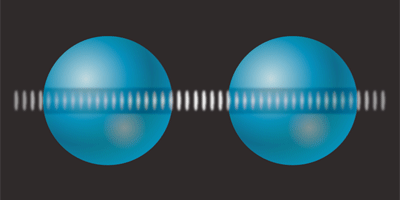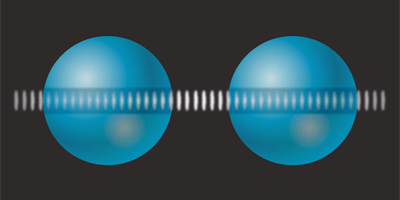The Gravitational Aharonov-Bohm Effect
The celebrated Aharonov-Bohm experiment showed that the electromagnetic potential—not just the fields—could have measurable effects on quantum particles. Now Michael Hohensee of the University of California, Berkeley, and his colleagues, have an idea for the gravitational equivalent of this experiment. Their proposed measurement, which they describe in Physical Review Letters, would demonstrate that particles need not experience any gravitational force in order to experience measurable effects from the gravitational potential, showing that the potential is the true fundamental quantity, not the force. Although this principle is not a surprise, it hasn’t yet been demonstrated experimentally because gravitational effects are so weak.
The team imagines using an optical lattice—a periodic potential created by counter-propagating lasers beams—to move ultracold atoms back and forth along a line. Placing two “source” masses, with holes bored through their centers, along the optical lattice would create three locations where, in the absence of any additional masses, the atoms feel zero gravitational force: near the center of each mass and at the point halfway between them.
An atom could be split into two matter waves, one of which would be moved inside a source mass, and the other halfway between the two source masses. After a period of time on the order of a second, the two matter waves would be brought back together, and their interference pattern would show a phase difference that could only result from the gravitational potential. In addition to the Aharonov-Bohm effect, the result would also constitute the first demonstration of a force-free gravitational redshift, where the two atomic matter waves serve as clocks experiencing different gravitational potentials. – David Ehrenstein





